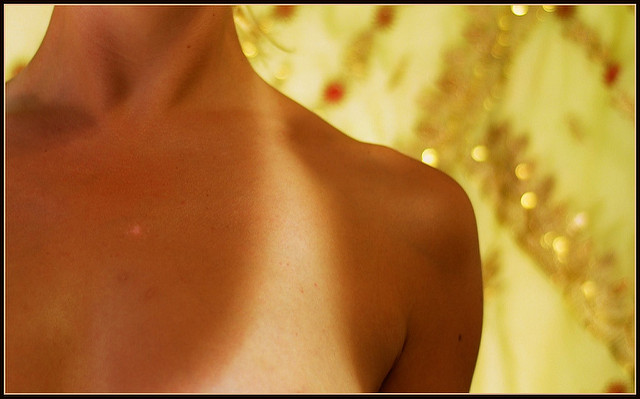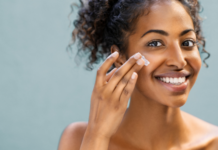What is a Tanning Bed Rash?
A tanning bed rash can sometimes get away for some days. within the in the meantime, the discomfort and itchiness from the rash may be distracting.
These rashes are quite common, thus if you’re a daily at the tanning salon, chances are more that you simply can encounter one at some purpose in your tanning journey. whereas these rashes are usually not dangerous, the variety of things will contribute to their development.
Using an excessive amount of tanning oil, tanning too usually, and therefore the use of low-quality tanning product is simply may causes.
While restful in a very tanning bed may be quite a pleasurable experience, it will probably cause some unpleasant aspect effects. Tanning bed rashes are patches, rough, dry, itchy skin that occur when visiting a tanning bed.
Everyone likes to look healthy. one amongst the main signs of health could be a tan, a tan causes you to look good, and healthy. While for the foremost thing is that use of a tanning booth can give similar results to what you’d get if you were to go outside into the sun, however faster and efficiency, there are the variety of problems that people those often use sunbeds tend to encounter.
What Causes of Tanning Bed Rash?
1. Too much Of UV Radiation
One of the main causes of a tanning bed rash is spending too much time on the tanning bed. For those people have sensitive to UV exposure than others, and often this sensitivity results in a red rash which will itch or burn. This is the foremost common reason behind rash from the tanning bed.
Most rashes are caused by mostly overdoing it on the tanning bed, and your skin is receiving much UV radiation than it will typically handle, this causes what’s known as an overdose on your skin.
The first you should try to stop getting to the tanning bed till the rash is gone. Don’t lay get into the sun, either, because it emits the precise same rays.
2. Dry skin
As you very well know that hydrated skin tans much better than dry skin. The tanning bed dries your skin out any, thus it’s notably necessary to form certain that you’re moisturizing properly if you’ve got a rash.
Apply a hypoallergenic and unscented lotion a minimum of twice daily, and also wear indoor tanning lotion or oil whenever you go to the tanning salon.
You should also take heat shower, instead of hot, and avoid soaking within the bath for prolonged periods of your time, as this may suck the moisture out of your skin.
Properly caring for your skin and keeping it in optimum condition to forestall xerotes can do away together with your rash once and for all.
This is another common reason behind tanning bed rash. the warmth and also the hot lightweight from the tanning bed quickly dries out your skin. this may cause a rash and is additionally a standard reason behind the haptic sensation on the skin that may you generally get when mistreatment tanning beds.
3.Light Sensitivity Disorder
The one reason for tanning bed rash that you just can’t do something regarding. Some people have light sensitivity disorder, this can be primarily wherever the lights in a tanning bed cause a reaction in the skin. it’s like an allergic reaction. If this can be the reason for your rash, then you should take which will eliminate the rash is to prevent tanning.
If you have not light sensitivity disorder and can’t stand the concept of not being tan, keep in mind that spray tanning is mostly choice, as are self-tanning lotions. As you’ll see, there are many alternative causes of heat rash from the tanning bed. despite what the foundation cause, managing them may be seriously unpleasant.
4. Allergic reactions
your tanning bed rash could also be caused by an allergic reaction to sure cleaners or cosmetics like tanning lotion that may lead to a tanning bed rash.
How to Get Rid of Tanning Bed Rash Fast?
1. Use Moisturizer
Since the rash is caused by a dry skin condition that you just have, keeping your skin moisturized is that the way to stop that from being a problem.
If you’re tanning bed rash is caused by dry skin, then there’s an effective way to reduce the rash and therefore the itching sensation that’s related to the rash. However, you should moisturize after you allow the tanning salon, to replace the hydration in your skin that may have inevitably been lost by the tanning light.
You should use only non-chemical based, non-irritating perfumes and moisturizers whilst suffering from tanning rashes.
Applying pure Aloe vera gel to your rash could soothe symptoms of redness and itching. An antihistamine cream could facilitate if your rash is because of allergic sensitivity. You will make sure that you just choose a moisturizer that’s hypoallergenic and good for sensitive skin. It’s additionally a decent plan to appear for one that’s targeted towards skin healing.
2. Avoid additional Sun exposure
If you just have suffered from a rash, and it isn’t or it hasn’t been a revenant drawback for you, then stopping tanning for some days can in all probability clear it right up.
Until your rash starts to subside, must have to apply a sunscreen with an SPF on top of thirty if you have to go outside. And also cover your rash area with loose garments product of natural fibers. It is best to wear loose cotton clothing. These steps take care of sun poisoning rash from the tanning bed
3.Wash the area thoroughly with warm water
Wash the rash completely. make certain to use warm water, not hot. Hot water will cause more irritation to the rash. Must avoid putting the rash directly in a stream of running water. Wash with a gentle, antibacterial soap that’s labeled for sensitive skin. Pat dry gently. make certain to not rub.











